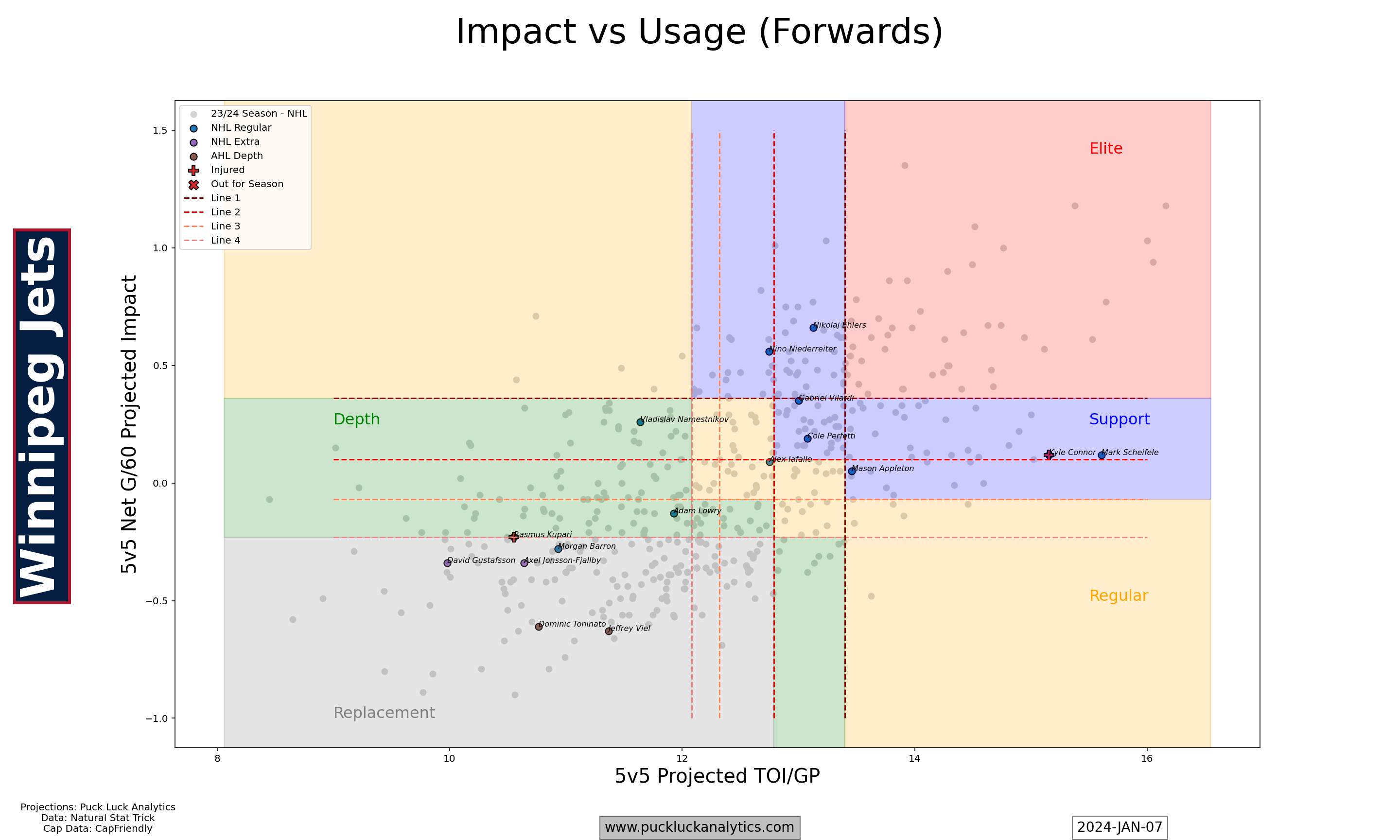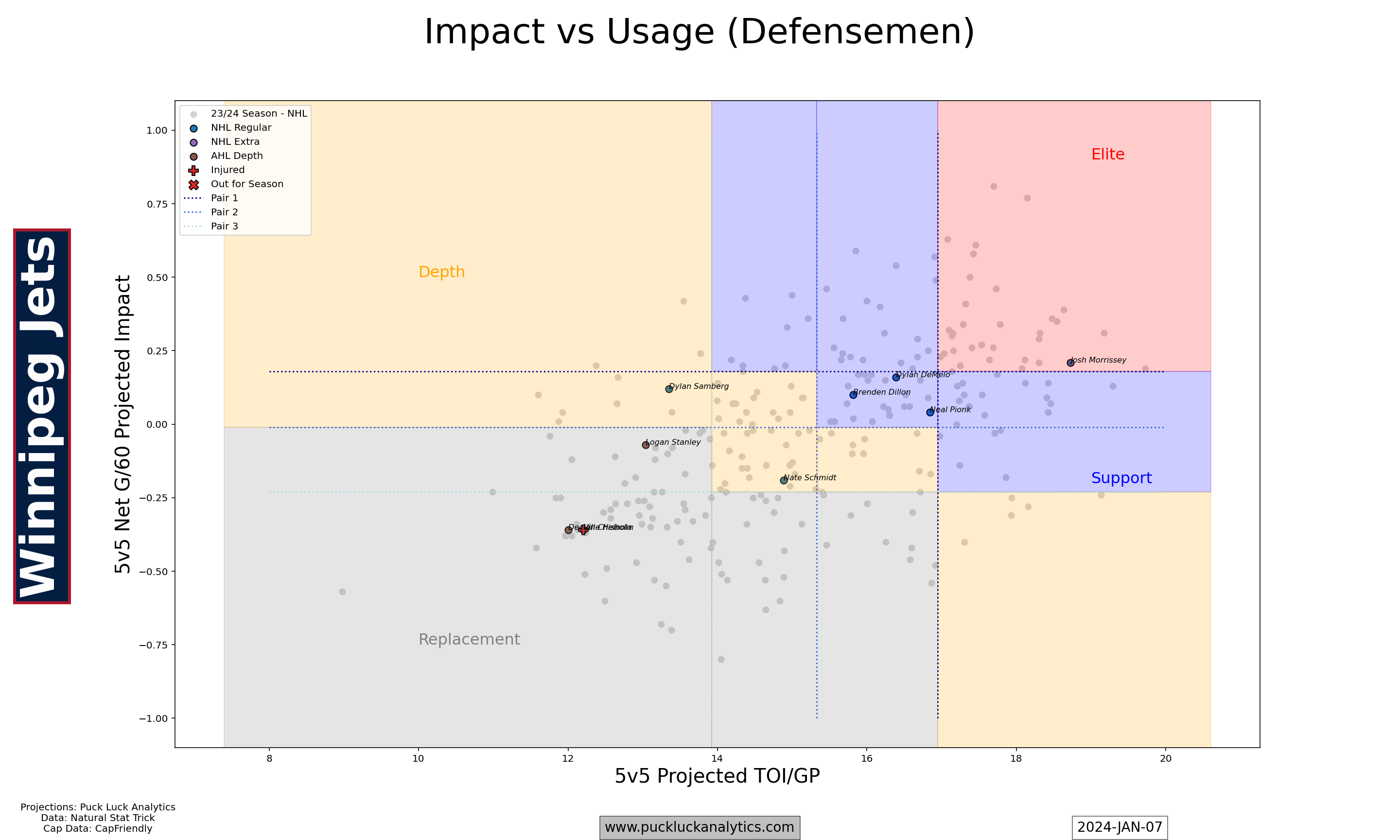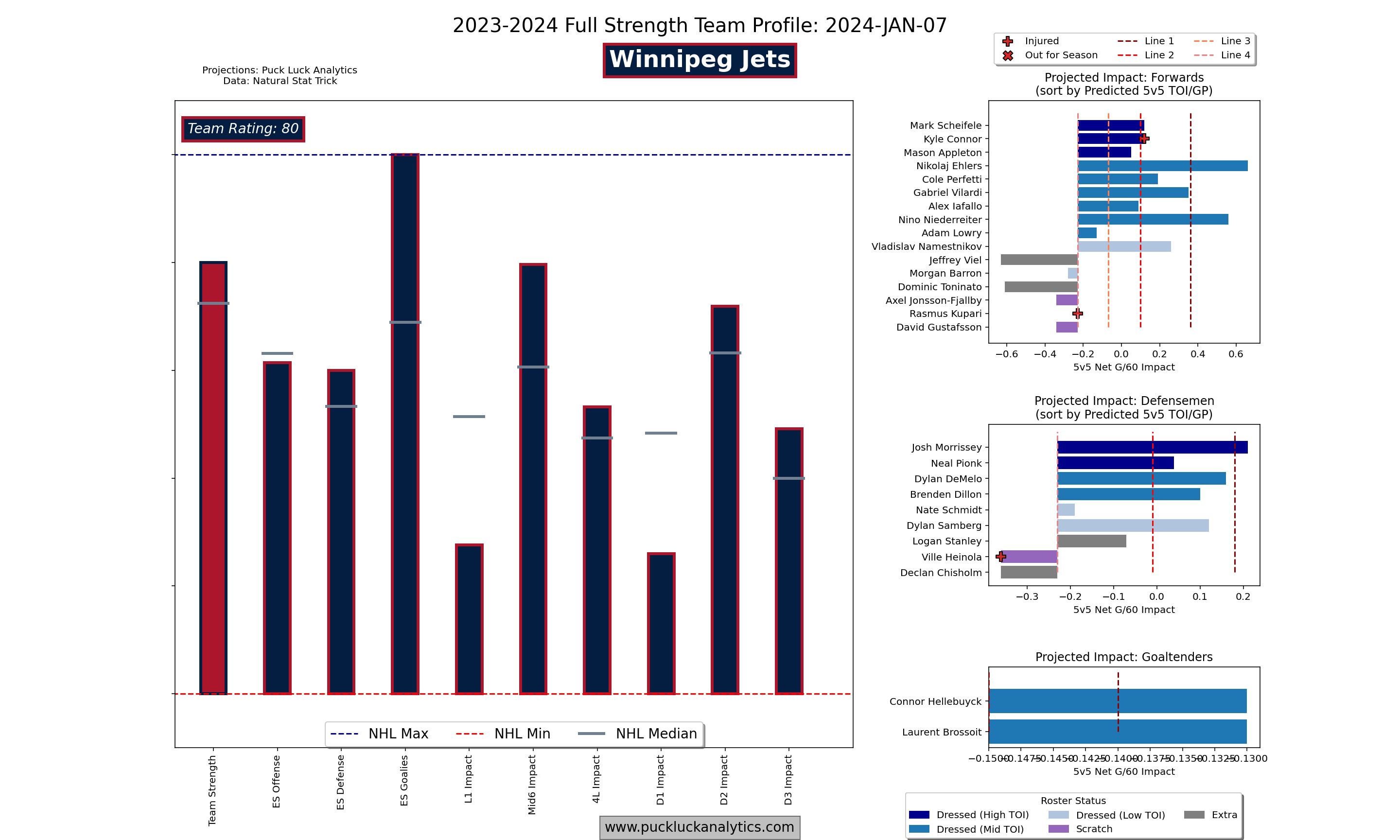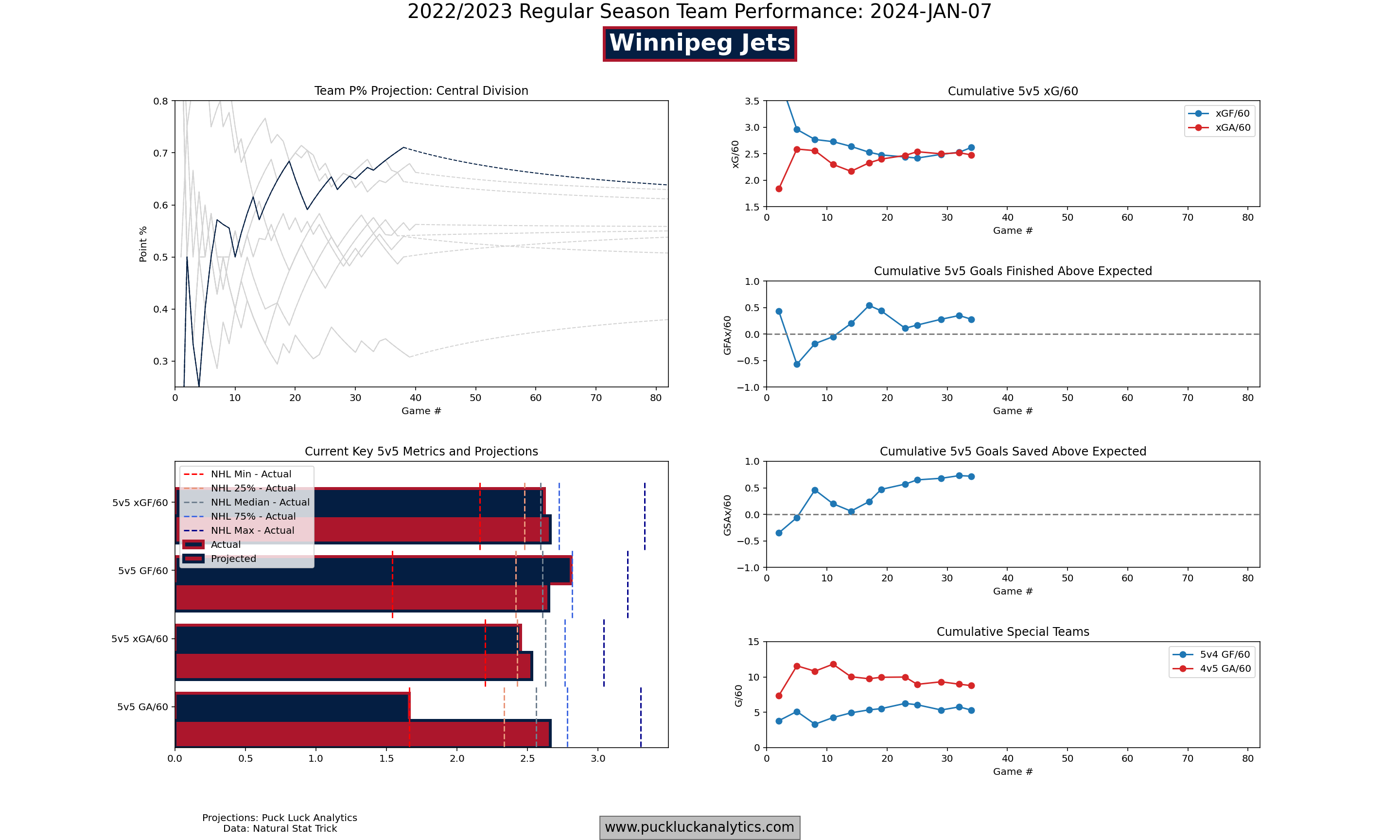The Winnipeg Jets sit atop the NHL standings. It’s mid January. The time is coming for contending teams to bolster their rosters for the playoff push. What do the Jets need to take them to the next level?
2023-2024 Roster and Season Performance
Connor Hellebuyck has been no small part of the Jets’ first half surge. As a team, the Jets goaltending is more than 0.5 GSAx/60 above break even at 5v5 on the season. It’s the primary factor in the Jets leading the league in 5v5 GA/60.
The Jets carried 5v5 play in their favor early in the season, but that advantage was waned as the season has gone on. It’s been more due to declining xGF rate while their xGA rate has held reasonably steady. They’ve shown a slight rebound the past few weeks, but it’s hard to tell if it’s the start of an upward trend or just noise at this point.
Special teams are a bit of a concern as well, with the penalty kill giving up goals at a steadily higher rate than their powerplay is generating them.
The Jets’ roster profile shows an above average team, but certainly does not look like a President’s Trophy favorite. Goaltending is the biggest strength, which we’re seeing in action. Depth from the middle of the lineup down is decent, which is no doubt contributing to their above average defensive numbers. It’s the top of the lineup where it looks like there is the most room for improvement.
Player Contributions

Looking at the 5v5 contribution plot for forwards, we get a more detailed picture of the weakness at the top of the lineup. The Jets have a strong contingent of support forwards with a few depth forwards below them. What’s missing for a contending caliber team is the elite forwards that can drive the bus against any competition. Adding one or two elite forwards could truly elevate the Jets forward roster. The benefit could be beyond the the contribution from the high end player(s) too. By reducing the load on Kyle Connor and Mark Scheifele, their impact is likely to improve as well.
Taking a look at the same plot for defensemen, we see a similar picture. It’s less extreme than with the forward group, with Josh Morrissey falling int the elite zone with a group of three supporting Dmen behind him. Adding another elite defensemen would be welcome, of course, but adding another mid-pair defensemen for injury protection might be a more reasonable move.

Trade Deadline Shopping List
While the Jets could certainly stand to add an elite player, doing so is not a simple thing. It might be even worse at the trade deadline, since teams in playoff contention are not willing to move those players. Rebuilding teams tend to have good, but not great, players available so the options will be limited. Add in cap limitations and it’s a big ask. CapFriendly currently projects the Jets will have about $4.9M in deadline cap space, which probably means retention needs to be in the cards to add an elite player. Perhaps they can shoot a bit lower and look at another support forward, simply to reduce the load on some of their other forwards and attempt to bump their impact a bit higher as a group.
Adding a mid pair defensemen might be a more reasonable target. Adding such a player will force the Jets to play either the acquired player or one of their established top 4 on the bottom pair, creating strong depth and providing some injury resilience within the lineup.
Depth forwards are typically readily available at trade deadline time. Such an addition could also help the Jets by adding some injury resilience up front. Much of their forward depth falls in the replacement level contribution, so they may be able to bolster the 4th line with an addition as well.
While doing their shopping, the Jets should look to the long term with their pool of future assets. They have a pick in every round of the next three drafts, except the 2025 4th round. They could certainly utilize some of that draft capital to upgrade the current roster. Their 2024 1st could be in play but I’d be hesitant to move the other 1st since I’m not convinced the team in front on Hellebuyck is good enough. They should also consider the next set of cohorts that will come through the system. The most logical might be a group that’s near prime now, centered around players now age 23-24 with the next with players around 18-19 and some draft picks from the next 1-2 years.





